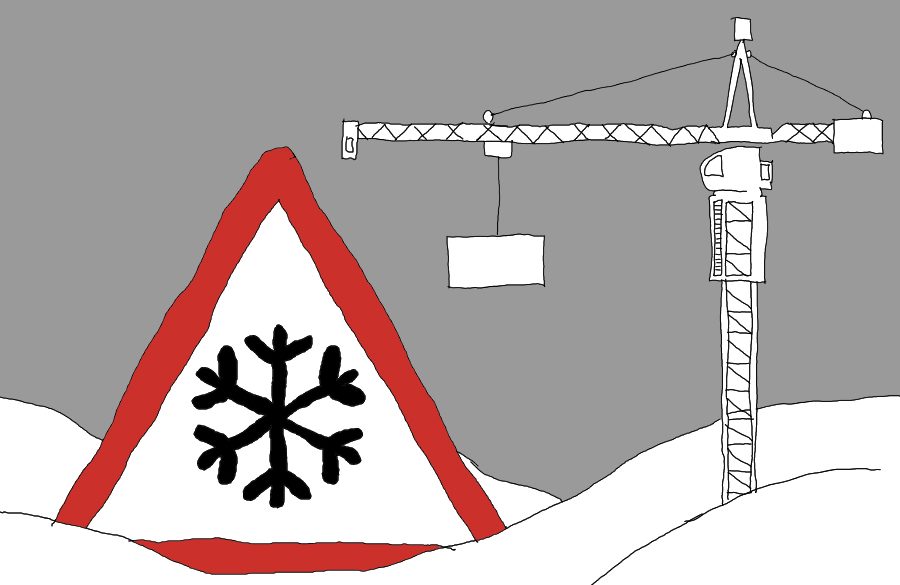Winter Safety Guide for Tradespeople in the UK

As winter sets in, the challenges on construction sites in Britain become uniquely hazardous. The combination of plummeting temperatures and reduced daylight presents risks such as icy terrain, low visibility, and adverse weather conditions. However, by adopting careful preparation and adjusting working practices, British tradespeople can sustain productivity while safeguarding themselves and their colleagues from seasonal dangers.
Safeguarding Practices for Winter
Assess Site Conditions Daily
– Walk-through Inspections
Conduct comprehensive site perimeter tours each morning to identify ice patches, debris obstacles, and flood-prone areas. Take necessary measures, such as gritting or clearing, to ensure safe access.
– Thermal Imaging Cameras
Utilize affordable infrared tools to detect slipping risks invisible to the naked eye. Regular scans throughout shifts help monitor changes in surface conditions.
– Anemometers
Measure wind speeds across exposed roof spaces to ensure safe handling of sheeting and scaffolds, considering gust variability.
– Hygrometers And Thermometers
Use combined gadgets to record air temperature, precipitation, and humidity levels. Ensure workable conditions before allowing activities like ladder climbing, concreting, or cable laying.
Update PPE Provisions
– Insulated Waterproof Workwear
Provide thin padded jackets and anchored footwear to maintain core temperatures without restricting movement during physically demanding tasks.
– Heated USB Gloves
Equip workers with rechargeable handwear featuring electric heating elements to keep fingers flexible for intricate tasks.
– Base Layer Essentials
Offer breathable merino wool tops and leggings to avoid sweat build-up, preventing the discomfort of smelly synthetic garments.
– Waterproof Knee Pads
Provide cushioned knee protection to prevent cold and dampness, especially when laying floors.
– Anti-Fog Safety Glasses
Upgrade eyewear to prevent misting that could obscure vision, particularly during drilling and cutting in damp atmospheres.
Optimise Site Layouts
– Covered Walkways
Install wooden-roofed passageways to safely connect amenities, avoiding slippery surface crossings between cabins and marquees.
– External Lighting
Illuminate key zones like toilet blocks, equipment stores, and vehicle routes to enhance visibility during the shorter daylight hours.
– Pack-Away Tool Stations
Protect frequently used tools from rain damage by storing them in movable tool caddies after shifts. This prevents morning ice from seizing mechanisms.
– Heated Mess Marquees
Set up insulated tents with thermostat-controlled warm air blowers for comfortable break areas. These spaces protect teams from getting cold when stationary, boosting morale and productivity.
Operate Responsible Working Hours
– Monitoring Exposure Times
Set maximum shift lengths for outdoor workers to prevent dangerous cold exposure, particularly for ground workers, scaffolders, and bricklayers.
– Providing Warm Drinks
Stock mess tents with free teas, coffees, and hot chocolate to replenish sugar and electrolyte levels.
– Scheduling Regular Breaks
Enforce hourly huddles in mess tents for short recuperation from cold, wet, or repetitive strain to restore circulation and rest eyes.
– Offering Flexi-Working
Empower teams to adjust their working hours based on sudden deteriorations in weather conditions.
– Stressing Symptom Vigilance
Educate all workers to stay alert to early hypothermia symptoms, such as impaired motor skills, shallow breathing, and discolored flaky skin, requiring swift first aid. Preventing fatalities is paramount.
By adopting these winter safety measures, British tradespeople can navigate the challenges of the colder months with enhanced protection and sustained productivity.